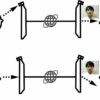A team of researchers at the Amsterdam Institute for Global Health and Development has developed a way to model anticipated antimicrobial resistance levels across countries using economic data. In their paper published in Proceedings of the National Academy of Sciences, the group describes using the average income for a country, average out-of-pocket health care expenses for those living there and the degree of government corruption to create models that could accurately represent anticipated antimicrobial resistance levels for a given country.
Over the past decade, it has become apparent that the antibiotics that doctors use to treat patients with infections are not working as well as they once did. Prior research has shown that this is because many of the bacteria behind such infections have, through mutations, developed resistance. Prior research has also shown that the development of antibiotic resistance has been aided by the overuse of antibiotics. For that reason, medical researchers in developed countries have begun to track bacteria and the therapies that are used to treat the infections that result. These efforts have led to better targeted therapies, less overuse of antibiotics and slowing in mutations in bacteria. Improvements have not been observed in many third-world countries, however, because they lack the funds to implement such systems. In this new effort, the researchers working in the Netherlands have developed an alternative approach—using economic data to predict resistance levels.
The work involved first looking at the relationship between antimicrobial resistance and economic conditions in a given country, through which the researchers detected patterns. They used these patterns to reverse the process—using economic data to predict antimicrobial resistance levels in different countries.
To test their models, the researchers restricted the number of pathogens to just the nine most common and compared what their models reported with health statistical data for a few select countries. They found their models to be 78 to 86% accurate for six of the nine pathogens included in the tests—high enough to track global resistance to the most common types of antibacterial agents.
Low antibiotic concentration in the environment enough to increase antimicrobial resistance in laboratory conditions
More information:
Rik Oldenkamp et al. Filling the gaps in the global prevalence map of clinical antimicrobial resistance, Proceedings of the National Academy of Sciences (2020). DOI: 10.1073/pnas.2013515118
Provided by
Science X Network
2020 Science X Network
Citation:
Using economic data to create predictive models of anticipated antimicrobial resistance levels across countries (2020, December 29)
retrieved 29 December 2020
from https://phys.org/news/2020-12-economic-antimicrobial-resistance-countries.html
This document is subject to copyright. Apart from any fair dealing for the purpose of private study or research, no
part may be reproduced without the written permission. The content is provided for information purposes only.



